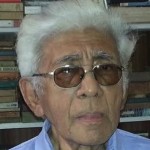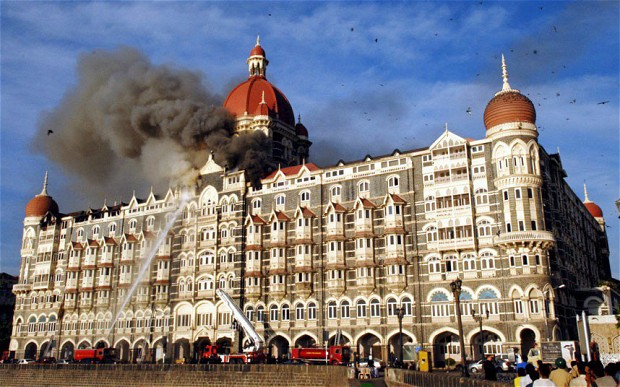By Izeth Hussain
I must make some preliminary clarifications before getting to the proper subject of this article. Some of the contents of this article are autobiographical, which might give some readers the impression that I am egotistically trying to draw attention to myself. Actually I have no alternative to drawing material from my own experience of Tamil lunatic fringe anti-Muslim racism because comparable material is not available elsewhere. My articles are published simultaneously in the Island and in the Colombo Telegraph where there is plenty of space for responses. I have been responding to my Tamil racist critics for several months in order to gather adequate material for an article on Muslim-Tamil relations, and this is it.
I have hesitated much before embarking on this article. Everyone knows about the Sinhalese-Tamil ethnic problem and the Sinhalese-Muslim ethnic problem, but what is this new-fangled nonsense about a Muslim-Tamil problem? We all know, of course, about the mosque massacres in the Eastern Province and the genocidal eviction of Muslims from Jaffna, but all that was in the past. Surely, it might be thought, in the post-war phase after 2009 there can’t be much more than minor matters to be resolved between the Muslims and the Tamils. So, for writing an article on Muslim-Tamil relations as a problem I might be projected as a person mischievously stirring up trouble, as a disturber of the peace.
It should be recognized, however, that there is a problem to the extent that there is a need for Muslim-Tamil ethnic reconciliation for the horrors committed in the past. This is a problem that has been ignored up to now even though K.M. de Silva wrote as follows in his 2012 book Sri Lanka and the defeat of the LTTE with reference to the genocidal eviction of Muslims from Jaffna: “Thus, reconciliation is not a matter solely of reconciliation between the Government and the Tamils or the Sinhalese majority and the Tamils. It needs to include reconciliation between the Tamils and the Muslims, as recompense to the Muslims for the only act of ethnic cleansing during the long struggle between the LTTE and the Sri Lankan state”.
I must at this point divagate briefly from my main narrative to make a clarification. Around 2000 a Tamil journalist named Eelaventhan declared at a meeting at the ICES that the eviction of Muslims from Jaffna had been preceded by Muslim Home Guards getting together with the STF and driving out Tamils from around sixteen villages in the Eastern Province. I asked him for the details so that I could write an article about it, but they were not forthcoming. On two more recent occasions also I made the same request of Tamils who made the same charge, but I have received nothing so far. According to my Muslim contacts the charge is a highly exaggerated one. Nothing was done by Muslims in the Eastern Province that could even remotely justify – on the principle of proportionality – the eviction of 80,000 Muslims from Jaffna. All that can be said in the absence of hard facts is that the process of reconciliation cannot even begin unless both sides acknowledge their wrong-doings.
However, what is required at the moment is not action towards Muslim-Tamil ethnic reconciliation but action to prevent the coming about of a full-fledged Muslim-Tamil ethnic problem. At present the problem is at an incipient inchoate stage. Would writing about it make it worse? Could ignoring it or playing it down make it fade away? My belief is quite to the contrary: we should shout about it and do everything possible to scotch it at the incipient stage as otherwise the Muslim-Tamil ethnic problem will almost certainly acquire monstrous proportions. Let me provide an illustration of what happens when an ethnic problem is ignored and continues to be ignored for decades. In 1993 the Western Australia University published a paper by me – along with others by Sri Lankans – on The Sri Lankan Muslims – The Problem of a Submerged Minority. The Preface to the collection of papers contained the following about mine: “The paper draws attention to the relative deprivation of the Muslim community in various spheres of life which, if unattended, has the potentiality of becoming another fissiparous issue in troubled Sri Lankan politics. Hussain’s paper is illustrative of the importance of perceptions of discrimination in complicating ethnic issues, and he correctly signals the necessity for effective State apparatuses to guarantee fair and equal treatment for all Sri Lankans”.
From 1975 to 2002 there were practically every year anti-Muslim ructions, some of which were of a very serious order. I wrote about them, but nobody else did as far as I can recall, and as for the Governments of that period they failed, or rather refused, to take any effective measures to curb anti-Muslim action. Probably they secretly enjoyed it all because all our Governments have included in their ranks pukkah racists. However the fact that the ructions stopped after 2002 might be taken as substantiating the thesis that the most effective way of dealing with ethnic problems would be to ignore them. But some years later there was the Grease Yaka harassment of Muslim females and the abduction for ransom of Muslim businessmen. Then, suddenly, there was the State-backed anti-Muslim campaign of the BBS and other extremist groups. Sri Lanka found itself with yet another ethnic problem, which attracted serious international concern. My view, expressed as far back as 1993, that the Muslim ethnic problem “if unattended” could become serious was proved to be right.
There are structural reasons why Muslim-Tamil tensions can aggravate into a major ethnic problem. All over the world ethnic minorities are becoming more restive. I believe that the underlying reason is that with the spread of mass education and economic development, the aspirations to upward mobility and political consciousness have also been increasing, so that minorities that were hitherto content with the subaltern positions assigned to them by dominant majorities now want equality. It is a process that can bring minorities into rivalry and conflict with majorities. It is also a process that can bring minorities into rivalry and conflict with each other. That is why I believe that Muslim -Tamil tensions can aggravate into a full-fledged ethnic problem unless preemptive action is taken.
I will now conclude this first part of my article by mentioning some of the most important factors that have led to unsatisfactory Muslim-Tamil relations, unsatisfactory in some ways up to now but not in every way. It all goes way back to Ponnambalam Ramanathan’s thesis in the late nineteenth century that the Sri Lankan Muslims are really Tamils. It caused deep offense at that time and has continued to rankle right down the decades. The Tamil affirmation of a linguistic commonality in the form of the “Tamil-speaking peoples” also tends to be rejected because it is seen as implying a denial of separate Muslim ethnic identity. The next factor was Ramanathan’s book on the 1915 anti- Muslim riots which was deeply sympathetic to the Sinhalese side. He indicted only the segment of the Muslims known as the Coast Moors but he was misinterpreted as indicting the whole of the Muslims because of deep prejudice. After Independence the Muslims backed the Sinhalese in every feat of racist idiocy against the Tamils, and were seen as profiting by that. There were the mosque massacres and the eviction of Muslims from the North which can continue to prejudice Muslim-Tamil relations as long as the problems of those refugees are not solved.
After the War Muslim-Tamil relations have clearly entered a new phase. The Tamils have lost their numerical preponderance in the Eastern Province. This has been due to heavy loss of Tamil humanity during the war and emigration, but the Tamils seem to prefer to believe that it is due to the Muslim population going on leaping upwards. The Tamils have been facing a continuing socio-economic decline over the decades, and they could fear that the Muslims will gain an ascendancy over them. A struggle for Muslim ascendancy – or rather for what Muslims see as their rightful place – is going on in the Eastern Province, in which Muslim fundamentalists can come to play a fateful role.
As I cannot go into details about what is going on in the Eastern Province I will conclude with an anecdote that could speak volumes. Around the year 2000, I attended a meeting at the ICES at which several EP Muslims were present. After the meeting was over they recounted an incident in which several Muslims had been killed by the LTTE, which however refused to deliver the corpses for Muslim burial. When the corpses were eventually returned it was found that every one of them had its penis stuck in the mouth. At that point one of the Muslims recounting that horror shouted, “We will not put up with their nonsense forever. We will fight”. That is my case for vigilance in the Eastern Province, and if necessary pre-emptive action now.
*To be continued











